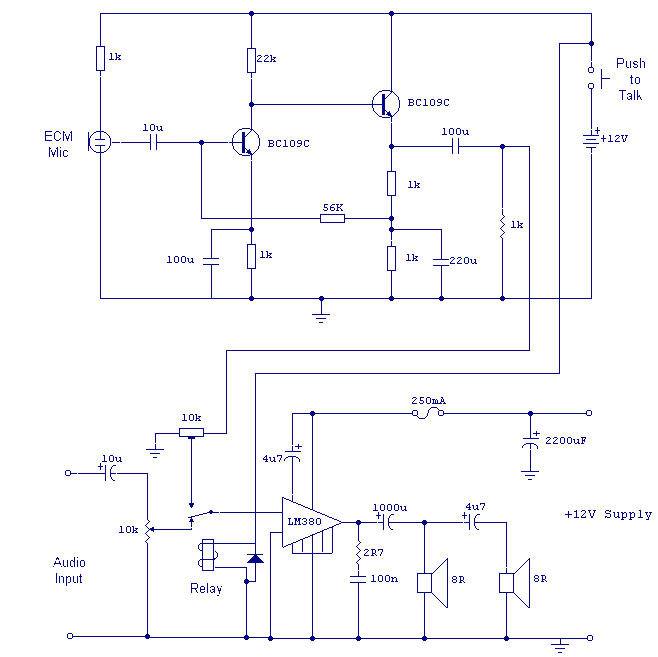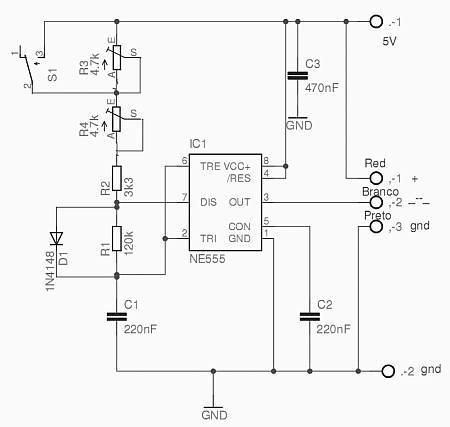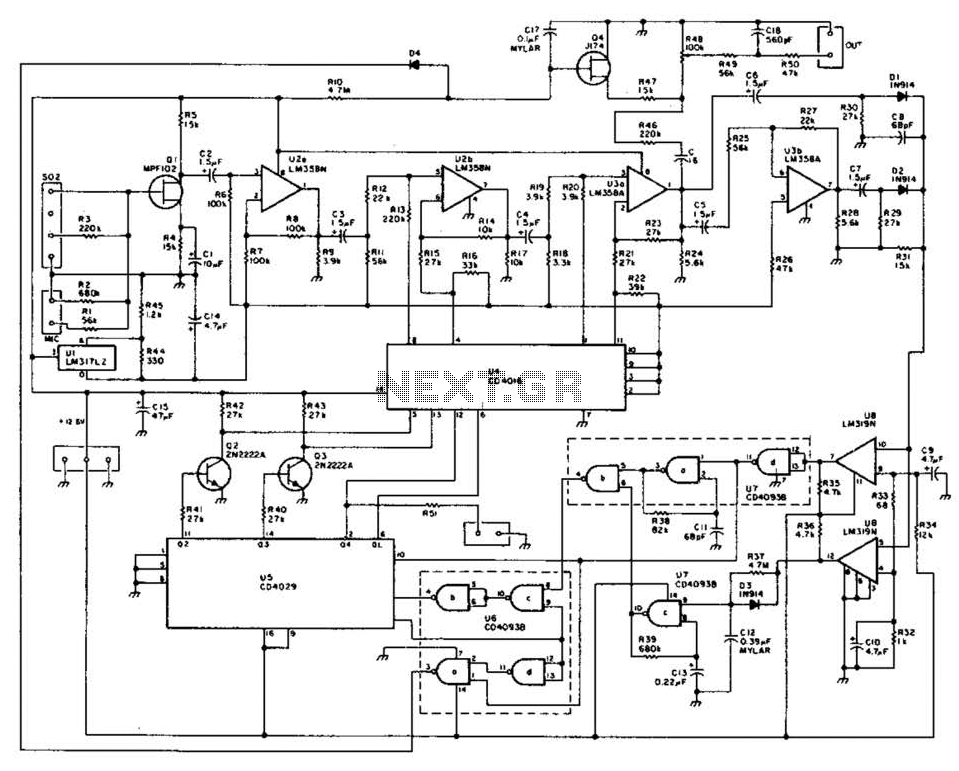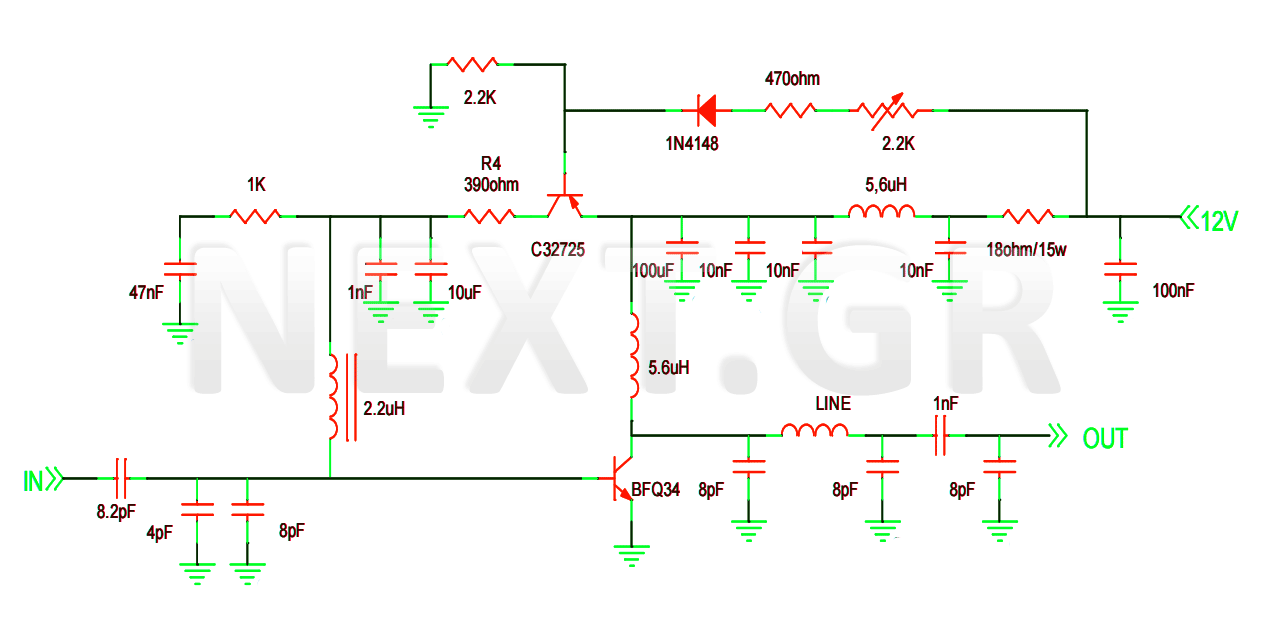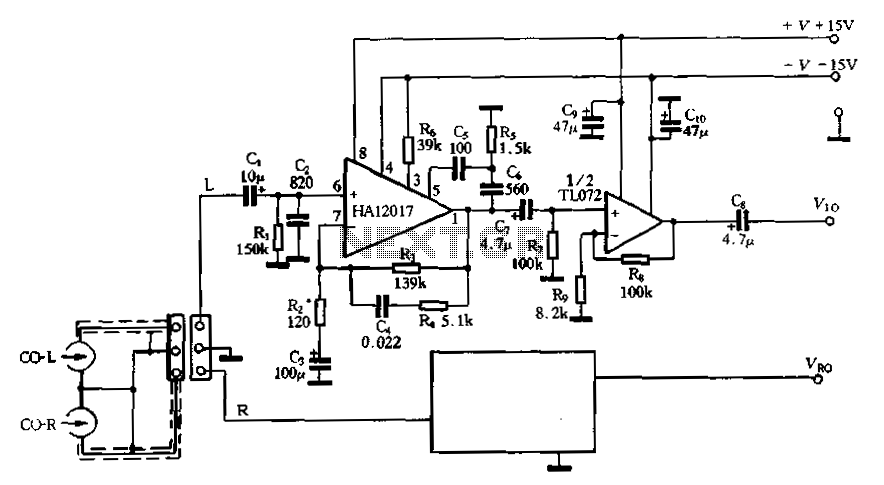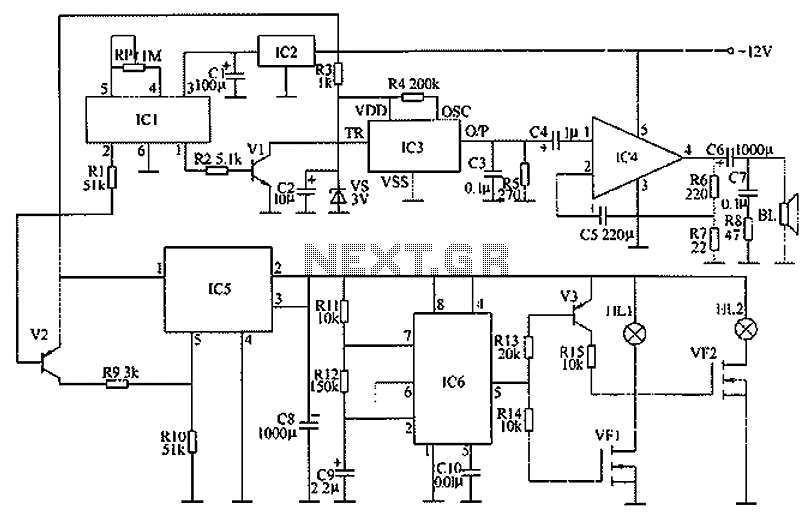
Triac gas - smoke alarm circuit schematic
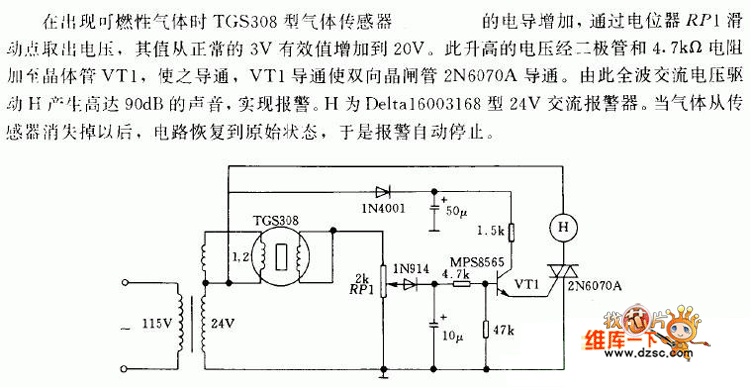
In the presence of combustible gas, the conductance of the TGS308 gas sensor increases, causing the voltage at the potentiometer RP1 slide point to rise from a normal 3V RMS to 20V. This elevated voltage is applied to transistor VT1 through a diode and a 4.7kΩ resistor, enabling VT1 to conduct, which in turn activates the triac 2N6070A.
The circuit utilizes the TGS308 gas sensor as a critical component for detecting combustible gases. The sensor operates based on changes in its conductance, which is directly proportional to the concentration of gas present in the environment. Under normal conditions, the sensor outputs a voltage of approximately 3V RMS. However, when combustible gas is detected, the sensor's conductance increases significantly, resulting in a voltage rise to 20V at the output.
The potentiometer RP1 is employed to adjust the sensitivity of the circuit. By sliding the potentiometer, the voltage can be fine-tuned to ensure optimal detection thresholds for various gas concentrations. The output voltage is then directed to the base of transistor VT1 through a diode that allows current to flow in one direction, protecting the transistor from potential back EMF or reverse voltages.
The resistor value of 4.7kΩ plays a crucial role in limiting the base current to VT1, ensuring that the transistor operates within its safe limits while still providing sufficient gain to drive the load. When the base current reaches a certain threshold, VT1 enters saturation, allowing a larger current to flow from the collector to the emitter.
The activation of VT1 subsequently triggers the conduction of triac 2N6070A. The triac is suitable for controlling high power loads and can handle AC voltages, making it ideal for applications such as activating alarms, relays, or other safety devices in response to gas detection. The triac remains latched in the 'on' state until the current through it drops below a certain level, allowing it to turn off and reset for subsequent gas detection events.
This circuit design exemplifies the integration of sensor technology with solid-state switching devices, providing a reliable solution for combustible gas detection and safety management in various applications.In the event of combustible gas, the conductance of TGS308 gas sensor increases, and the voltage is removed through the potentiometer RP1 slide point, and its value is increased from normal 3V rms to 20V. This elevated voltage is added to transistor VT1 through diode and 4.7k? resistor, so that VT1 gets conduction, then Triacs 2N6070A gets conduction. Thus,.. 🔗 External reference
The circuit utilizes the TGS308 gas sensor as a critical component for detecting combustible gases. The sensor operates based on changes in its conductance, which is directly proportional to the concentration of gas present in the environment. Under normal conditions, the sensor outputs a voltage of approximately 3V RMS. However, when combustible gas is detected, the sensor's conductance increases significantly, resulting in a voltage rise to 20V at the output.
The potentiometer RP1 is employed to adjust the sensitivity of the circuit. By sliding the potentiometer, the voltage can be fine-tuned to ensure optimal detection thresholds for various gas concentrations. The output voltage is then directed to the base of transistor VT1 through a diode that allows current to flow in one direction, protecting the transistor from potential back EMF or reverse voltages.
The resistor value of 4.7kΩ plays a crucial role in limiting the base current to VT1, ensuring that the transistor operates within its safe limits while still providing sufficient gain to drive the load. When the base current reaches a certain threshold, VT1 enters saturation, allowing a larger current to flow from the collector to the emitter.
The activation of VT1 subsequently triggers the conduction of triac 2N6070A. The triac is suitable for controlling high power loads and can handle AC voltages, making it ideal for applications such as activating alarms, relays, or other safety devices in response to gas detection. The triac remains latched in the 'on' state until the current through it drops below a certain level, allowing it to turn off and reset for subsequent gas detection events.
This circuit design exemplifies the integration of sensor technology with solid-state switching devices, providing a reliable solution for combustible gas detection and safety management in various applications.In the event of combustible gas, the conductance of TGS308 gas sensor increases, and the voltage is removed through the potentiometer RP1 slide point, and its value is increased from normal 3V rms to 20V. This elevated voltage is added to transistor VT1 through diode and 4.7k? resistor, so that VT1 gets conduction, then Triacs 2N6070A gets conduction. Thus,.. 🔗 External reference
